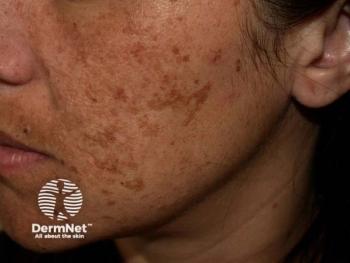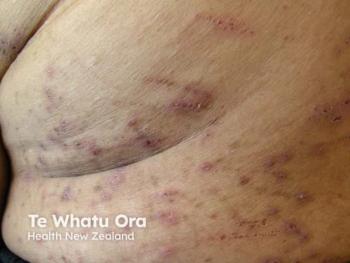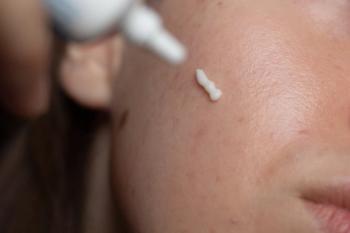
Time Equals Follicles: The Evolving Landscape of Hair Loss Treatment with Alan J. Bauman, MD
In this exclusive Q&A, Alan J. Bauman, MD, shares expert insights on innovative hair loss treatments, early intervention strategies, and the future of alopecia care.
In recognition of August’s Hair Loss Awareness Month, Dermatology Times spoke with Alan J. Bauman, MD, founder of Bauman Medical in Boca Raton, Florida. With more than 35,000 patients treated and nearly 3 decades of experience, Bauman shared insights on early intervention, cutting-edge diagnostics, regenerative therapies, and the evolving role of personalized technology in the treatment of alopecia.
Dermatology Times: Can you elaborate on the “Time Equals Follicles” philosophy and what it means for dermatologists and their patients?
Bauman: At Bauman Medical, our guiding principle is “Time Equals Follicles.”Hair loss is progressive — the earlier we identify and address it, the more healthy follicles we can preserve. This is critical for dermatologists and hair restoration physicians to understand because every month of inaction can mean irreversible follicle miniaturization. Early intervention allows us to stabilize the condition, protect the follicles that are still viable, and often stimulate dormant ones back into a healthier growth cycle. For patients, it means not waiting until hair loss is obviously visible before seeking help. The sooner they’re evaluated, diagnosed properly, including baseline measurements, and treatment initiated, the greater their chances of long-term hair survival and density.
Dermatology Times: What is your overall approach to hair loss/alopecia areata diagnosis, treatment, and education?
Bauman: I take a holistic, multi-modality approach that starts with an in-depth medical and hair loss history, high-resolution scalp imaging with density measurements, and sometimes genetic or biomarker testing. Tools like HairMetrix AI, HairChecktrichometry, TrichoTest genetic testing, and polarized light microscopy allow me to pinpoint the cause, severity, and progression. From there, I tailor a plan that may include regenerative therapies, prescription medications, nutritional optimization, low-level laser therapy, or hair transplantation. Education is essential. Patients need to understand that hair loss is not one-size-fits-all. My role is to demystify the process, set realistic expectations, and empower them with information on science-based treatments to take an active role in their hair health.
Dermatology Times: What are some of the innovative at-home treatments that are up and coming in the alopecia space?
Bauman: We’re seeing rapid advancements in at-home treatments that make professional-grade interventions more accessible. One example is our own Bauman TURBO LaserCap, which I helped develop in collaboration with the original inventor of the Laser Cap and his team of Harvard photomedicine researchers and MIT optical physicists. It delivers the highest level of low-level laser therapy and the largest coverage area available in an at-home FDA-cleared device for hair growth in just 5 minutes a day.
We’re also refining prescription topical and oral regimens, including customized topical finasteride and minoxidil formulations, as well as our PEPgro peptide-based topical designed to help improve scalp health and support stronger, healthier hair. On the nutraceutical side, our BaumanMD physician-formulated supplement line was created to support every aspect of hair health — from follicle nutrition and structural integrity to scalp environment and regenerative potential. We also integrate trusted third‑party options like Nutrafol, Viviscal, and Xtressé when appropriate.
Dermatology Times: How about the in-office regenerative treatments you offer? What makes your approach to hair transplantation unique?
Bauman: All procedures at Bauman Medical are optimized for hair growth results and patient comfort. Our in-office regenerative protocols include PRP (platelet-rich plasma), TED+Exosomes, PDOgro Polydioxanone threads, and other advanced biologics that enhance follicle function and scalp health. With PRP in particular, many patients don’t realize that not all PRP is created equal. Differences in platelet concentration, the presence of growth factors, and the preparation method can dramatically influence results. Here, we use advanced PRP processing systems specifically designed to maximize platelet concentration and growth factor bioavailability, ensuring the highest regenerative potential for our patients and long-lasting results from a single treatment. It should also be noted that many PRP providers do not perform painless procedures, but we use painless local anesthesia to ensure patient comfort. These therapies can be performed on their own for hair growth or integrated into a hair transplantation plan to improve graft survival, accelerate healing, and enhance the overall outcome.
When it comes to transplantation, we specialize in minimally invasive FUE (follicular unit extraction), including our exclusive VIP|FUE No‑Shave harvest technique, a discreet option with minimal downtime. Every transplant is meticulously planned and executed with artistry to create a natural, age-appropriate hairline using precise angulation, density, and distribution so it blends seamlessly with existing hair. Equally important, we help patients protect and preserve their native hair with ongoing medical and regenerative care. By stabilizing existing follicles, we maintain density and often help patients avoid the need for future transplants.
Dermatology Times: How do you envision breakthroughs like artificial intelligence and other innovations enhancing your practice in the next few years?
Bauman: Artificial intelligence is already transforming how we diagnose and monitor hair loss. Tools like HairMetrix use AI to measure follicle density, diameter, and scalp health in real time — without trimming hair — allowing us to track even the smallest changes over time. In the near future, AI will further personalize treatment protocols, improve our ability to predict outcomes, and allow us to monitor patients remotely with unmatched precision.
In our office, patients have been able to verbally interact with a digital “avatar” or Virtual Twin, which is a generative AI model trained on 28 years of published material. This Virtual Twin has participated in AI Wellness’ “Ask My Avatar” Challenge at numerous conferences around the country.
In regenerative medicine, one of the most exciting advances we’ve seen is Hair Follicle Stem Cell Banking. By preserving your own healthy, youthful follicles today, we can secure a lifelong source of your body’s most potent hair-regenerating cells. From those banked follicles, the therapy we can perform today is called STEMgro — the secretome collected from your own cultured hair follicle stem cells. This secretome contains a rich mix of your body’s own growth factors and signaling molecules, which we can use now to support follicle function, improve scalp health, and enhance regeneration.
The truly exciting part is that this is only the beginning. With ongoing innovation, the potential applications for your banked follicles will grow dramatically — from advanced regenerative therapies to potentially even full follicle regeneration, aka “hair cloning.” That’s why banking your youngest, healthiest follicles now is so important; it gives you the best possible resource for the future of hair restoration.
Dermatology Times: What is the most important piece of advice you would give to clinicians treating patients with hair loss?
Bauman: Don’t wait — and don’t let your patients wait. Hair loss is far more responsive to treatment in its early stages, and it’s much easier to preserve existing follicles than to replace them later. Invest in proper education and diagnostic tools to document the starting point and track progress objectively. And remember, hair loss is emotional. Taking the time to listen and empathize will make you a better clinician and help patients feel supported through what can be a deeply personal journey. Most of our patients spend well over an hour in our clinic getting answers to their questions and clinical guidance. If your clinician cannot perform accurate measurements for hair loss diagnosis and tracking to go along with an effective treatment regimen, consider seeking out a professional who can.
Dermatology Times: Is there anything else you’d like to share with our audience of dermatologists?
Bauman: I’d emphasize the importance of multidisciplinary collaboration in hair restoration. Dermatologists, trichologists, nutritionists, regenerative medicine specialists — we all have unique perspectives and tools that, when integrated, can produce the best outcomes. And finally, I’d encourage my colleagues to think of hair restoration as a long-term health partnership with their patients. By combining early diagnosis, ongoing monitoring, and a willingness to embrace emerging technologies, we can give patients results that are both aesthetically pleasing and medically sustainable.
Newsletter
Like what you’re reading? Subscribe to Dermatology Times for weekly updates on therapies, innovations, and real-world practice tips.


















